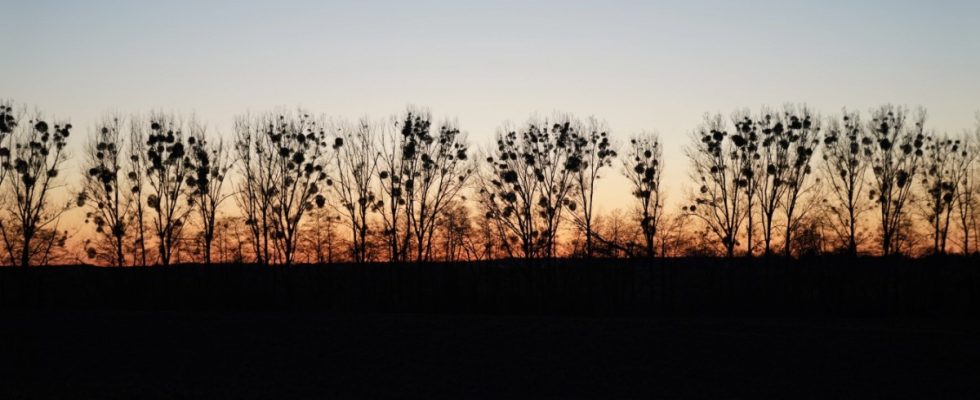Mistletoe is increasingly attacking pine trees in Bavaria’s forests. This worries experts because the semi-parasites further weaken the conifers that are stressed by global warming. “In times when it is dry, it becomes twice as difficult for the tree,” explains Hans-Joachim Klemmt from the Bavarian State Institute for Forestry and Forestry (LWF) in Freising. The experts now want to investigate in several places in northern Bavaria how the infected pine trees are doing and whether any patterns of spread in the mistletoe can be identified.
Pine trees are mainly found in the north of the Free State. In 2007, the infestation with mistletoe was documented for the first time during the forest status survey, says Klemmt. At that time, only 1.7 percent of the sample trees were infected. It is now almost 40 percent.
The LWF experts attribute the increase to global warming. “The living conditions for the mistletoe are getting better. The more severe frosts in winter are no longer there,” says Klemmt. Birds also changed their migratory behavior. Since they spread the mistletoe from tree to tree, this could play a role in the increasing mistletoe infestation.
Mistletoe (Viscum album) is known to many people primarily as a Christmas decoration, as a lucky charm or as a medicinal plant. According to Klemmt, three species are native to this country: pine mistletoe, pine mistletoe and deciduous mistletoe. Mistletoe removes water and nutrients from the host tree. According to the Nature Conservation Association of Germany (Nabu), birds like to snack on the white berries, which are so sticky that parts stick to their beaks. If they then sharpen their beaks on a tree or leave their droppings there, mistletoe seeds stick to the bark.
The evergreen spherical mistletoe clumps are particularly noticeable in winter when deciduous trees are bare. This is why mistletoe infestation can be observed particularly well on city trees, in parks or in orchards. Every winter, Nabu calls for people to report mistletoe in treetops via a homepage. Accordingly, mistletoe was most often observed in poplars and apple trees. However, this data is not representative, said a Nabu spokesman.
Berlin has been recording mistletoe infestation of deciduous trees such as maple, birch, linden and poplar in selected locations in the southwest of the city since the 1980s – and has also noticed a significant increase in the number of infested trees since then. In an experiment with swamp oaks in a park, experts examined whether the trees would become stronger again if mistletoe was removed from the surface of the branches. They came to the conclusion that this can be the case, but that it also depends on the location and further care measures.
Birds like to eat the white berries of mistletoe.
(Photo: Manfred Ruckszio/Imago)
However, it is not possible to prune mistletoe over large areas in forests or in large parks. In Munich’s Nymphenburg Palace Park, experts have therefore equipped the old linden trees with sensors in a pilot project to find out how and when best to cut back the linden trees infected with mistletoe.
In the research project in northern Bavaria, the LWF wants to take different samples of pine trees in six different places, including from the needles and small twigs in the crown, which a special drone with a gripper arm cuts off. In addition, the mistletoe from trees that are felled during forestry work in April in the Nuremberg Reichswald will be examined. Klemmt assumes that the first results can be published at the end of this year or the beginning of next year. “It’s just a small project.” From his point of view, it therefore makes sense to expand it in the future and include federal states with a lot of pine trees such as Brandenburg and neighboring countries such as Austria.

